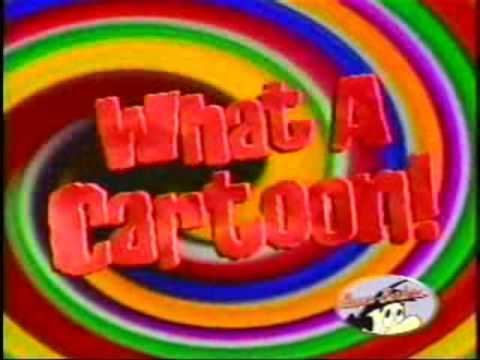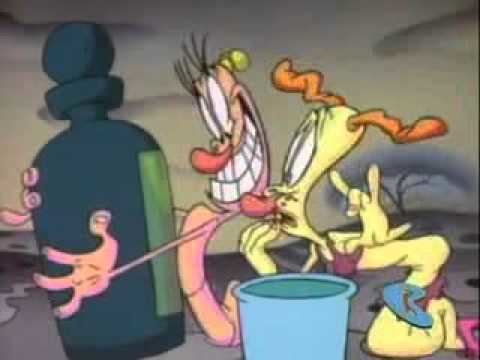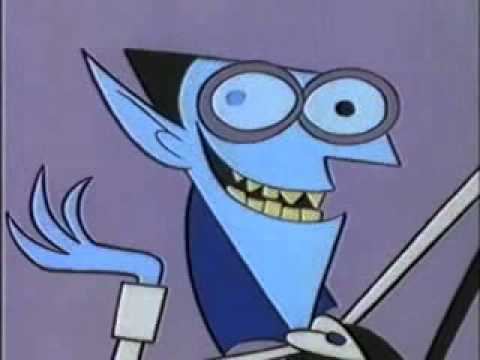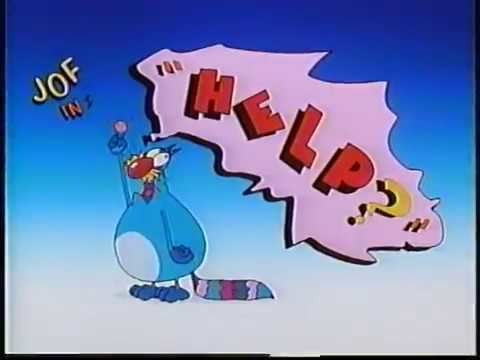8.6 /10 1 Votes
8.3/10 TV Composer(s) Various | 8.7/10 IMDb Genre ComedyVariety Voices of Various Final episode date 28 November 1997 | |||||||||||||||||||||||||||||||||
 | ||||||||||||||||||||||||||||||||||
Also known as World Premiere ToonsThe What A Cartoon! ShowThe Cartoon Cartoon Show Theme music composer Gary LionelliBill Burnett (uncredited) Cast Mark Hamill, Brad Garrett, Faizon Love, Ryan Stiles | ||||||||||||||||||||||||||||||||||
What A Cartoon! (later known as The What A Cartoon! Show and The Cartoon Cartoon Show), is an American animation showcase series created for and aired on Cartoon Network by Fred Seibert, who which is produced by Hanna-Barbera; the already founded Cartoon Network Studios began to produce some of the shorts as its division. The project consisted of 82 short cartoons, intended to return creative power to animators and artists, by recreating the atmospheres that spawned the iconic cartoon characters of the mid-20th century. Each of the shorts mirrored the structure of a theatrical cartoon, with each film being based on an original storyboard drawn and written by its artist or creator.
Contents
- Origins and production
- Format
- Crew
- Broadcast
- Legacy
- Season 1 199597
- Season 2 The Cartoon Cartoon Show 19982002
- Cartoon Cartoon segments
- References

The series first aired on February 20, 1995, and the shorts were promoted as World Premiere Toons. During the original run of the shorts, the series was retitled to The What a Cartoon! Show and later to The Cartoon Cartoon Show until the final shorts aired on August 23, 2002. The project served as the launching point for multiple Cartoon Network series, including The Powerpuff Girls, Dexter's Laboratory, Johnny Bravo, Cow and Chicken, Courage the Cowardly Dog, Mike, Lu & Og, Sheep in the Big City, Whatever Happened to... Robot Jones?, Codename: Kids Next Door, Grim and Evil, Megas XLR as well as Fox's Family Guy.

The series is influential for birthing a slew of original Cartoon Network hits and helping to revive television animation in the 1990s. Once it had several original shorts, those became the first Cartoon Cartoons (a collective term for retro Cartoon Network original series). In its final years, The Cartoon Cartoon Show became a block for reruns of older Cartoon Cartoons that had been phased out by the network.

Origins and production

Fred Seibert became president of Hanna-Barbera Cartoons, Inc. in 1992 and helped guide the struggling animation studio into its greatest output in years with shows like 2 Stupid Dogs and SWAT Kats: The Radical Squadron. Seibert wanted the studio to produce short cartoons, in the vein of the Golden Age of American animation. Although a project consisting of 48 shorts would cost twice as much as a normal series, Seibert's pitch to Cartoon Network involved promising 48 chances to "succeed or fail", opened up possibilities for new original programming, and offered several new shorts to the thousands already present in the Turner Entertainment library. According to Seibert, quality did not matter much to the cable operators distributing the struggling network, they were more interested in promising new programs.
With Turner Broadcasting CEO Ted Turner and Seibert's boss Scott Sassa on board, the studio fanned out across the world to spread the word that the studio was in an "unprecedented phase", in which animators had a better idea what cartoons should be than executives and Hanna-Barbera supported them. The company started taking pitches in earnest in 1993 and received over 5,000 pitches for the 48 slots. The diversity in the filmmakers included those from various nationalities, race, and gender. Seibert later described his hope for an idealistic diversity as "The wider the palette of creative influences, the wider and bigger the audiences."
Seibert's idea for the project was influenced heavily by Looney Tunes. Hanna-Barbera founders and chairmen William Hanna and Joseph Barbera, as well as veteran animator Friz Freleng, taught Seibert how the shorts of the Golden Age of American animation were produced. John Kricfalusi, creator of The Ren and Stimpy Show, became a teacher of sorts for Seibert and was the first person Seibert called while looking for new talent for the project.
As was the custom in live action film and television, the company did not pay each creator for the storyboard submitted and pitched. For the first time in the studio's history, individual creators could retain their rights, and earn royalties on their creations. While most in the industry scoffed at the idea, encouragement, according to Seibert, came from the cartoonists who flocked to Hanna-Barbera with original ideas.
Format
The format for What a Cartoon! was ambitious, as no one had ever attempted anything similar in the television animation era. The shorts produced would be a product of the original cartoonists' vision, with no executive intervention: for example, even the music would be an individually crafted score. Each "Looney Tunes length" (7 minutes) short would debut, by itself, as a stand-alone cartoon on Cartoon Network. Seibert explained the project's goal in a 2007 blog post: "We didn’t care what the sitcom trends were, what Nickelodeon was doing, what the sales departments wanted. [...] We wanted cartoons."
Crew
The What a Cartoon! staff had creators from Europe (Bruno Bozzetto), Asia (Achiu So), and the United States (Jerry Reynolds and colleague Seth MacFarlane). The crew also contained young series first timers (like Genndy Tartakovsky, Craig McCracken, Rob Renzetti, Butch Hartman, and John R. Dilworth), but veterans as well (like Don Jurwich, Jerry Eisenberg, and Ralph Bakshi). In addition to the veterans, William Hanna and Joseph Barbera each produced two shorts each for What a Cartoon!. Many of the key crew members from previous Hanna-Barbera series 2 Stupid Dogs joined the team of What a Cartoon! as well.
Many of its crew members later went on to write and direct for Dexter's Laboratory, Johnny Bravo, Cow and Chicken, I Am Weasel, and The Powerpuff Girls, including those named above. The Kitchen Casanova director John McIntyre is particularly known for directing several Dexter episodes. Ralph Bakshi's two shorts (Malcom and Melvin and Babe! He... Calls Me) were considered too risqué to be shown. It has been rumored that John Kricfalusi was slated to direct several new What a Cartoon! shorts of his own (produced by his production company, Spümcø). However, both Yogi Bear-influenced cartoons were commissioned separately by Seibert, and instead premiered as their own: Boo Boo Runs Wild and A Day in the Life of Ranger Smith both premiered in 1999.
Inspired by Seibert's interest in the modern rock posters of Frank Kozik, each of the shows' creators worked with the internal Hanna-Barbera Creative Corps Creative Director Bill Burnett, and Senior Art Director Jesse Stagg to craft a series of high quality, limited edition, fluorescent art posters. The Corps launched a prolonged Guerrilla mailing campaign, targeting animation heavyweights and critics leading up to the launch of World Premiere Toons. The first poster campaign of its kind introduced the world to the groundbreaking new stable of characters.
Broadcast
The first cartoon from the What a Cartoon! project broadcast in its entirety was The Powerpuff Girls in "Meat Fuzzy Lumkins", which made its world premiere on Monday, February 20, 1995, during a television special called the World Premiere Toon-In (termed "President's Day Nightmare" by its producers, Williams Street). The special was hosted by Space Ghost and the cast of Space Ghost Coast to Coast, and featured comic interviews and a mock contest with the creators of the various cartoons. The Toon-In was simulcast on Cartoon Network, TBS Superstation, and TNT. To promote the shorts, Cartoon Network's marketing department came up with the concept of "Dive-In Theater" in 1995 to showcase the 48 cartoon shorts. The cartoons were shown at water parks and large municipal swimming pools, treating kids and their parents to exclusive poolside screenings on 9' x 12' movie screens.
Beginning February 26, 1995, each What a Cartoon! short began to premiere on Sunday nights, promoted as World Premiere Toons. Every week after the premiere, Cartoon Network showcased a different World Premiere Toons made by a different artist. After an acclimation of cartoons, the network packaged the shorts as a half-hour show titled World Premiere Toons: The Next Generation, featuring reruns of the original shorts but also new premieres.
Eventually, all of the cartoons were compiled into one program which was used the name World Premiere Toons: The Show until the summer of 1996 when it started bearing the name of the original project: The What a Cartoon! Show. The show's initial premieres for each short preceded Cartoon Network's Sunday night movie block, Mr. Spim's Cartoon Theatre. The shorts continued to air on Sundays until 1997, when the network moved the shorts to Wednesdays at 9pm. Following the premiere of Johnny Bravo, Cow and Chicken and I Am Weasel as full series in July 1997, the series shifted to Thursday nights, where it remained.
The What a Cartoon! Show continued airing new episodes on Thursdays until November 28, 1997, when the final short of the 48 contracted during Seibert's era aired. In 1998, Cartoon Network debuted two new short pilots and advertised them as World Premiere Toons: Mike, Lu & Og and Kenny and the Chimp, both of which were produced by outside studios. The two pilots were later compiled into The Cartoon Cartoon Show, while both shorts eventually garnered their own series, Mike, Lu & Og in 1999 and Codename: Kids Next Door in 2002. Two pilots entitled King Crab: Space Crustacean and Thrillseeker, respectively dated 1999 and 2000, was also retconned into The Cartoon Cartoon Show anthology.
On June 9, 2000, The What a Cartoon! Show was relaunched as The Cartoon Cartoon Show. In this new format, it aired reruns and new episodes of the full-series Cartoon Cartoons, as well as new Cartoon Cartoon shorts and old WAC! shorts. From 2000 to 2001, the pilot shorts appearing on the network's viewer's poll that lost to The Grim Adventures of Billy & Mandy and Codename: Kids Next Door (except for Whatever Happened to... Robot Jones?) were added to the anthology. The show continued to air until October 9, 2003, when it was temporarily dropped from the network's schedule.
On September 12, 2005, The Cartoon Cartoon Show was revived, this time as a half-hour program featuring segments of older Cartoon Cartoons that were no longer shown regularly on the network, such as Cow and Chicken, I Am Weasel, and others. Some Cartoon Cartoons were moved exclusively to this show and the Top 5, though there was also some overlap with shows that already had regular half-hour slots outside the series. In 2006, the programming was expanded to also include non-Cartoon Cartoons that were regularly shown on the network, such as Foster's Home for Imaginary Friends, Camp Lazlo, My Gym Partner's a Monkey, and Squirrel Boy. The show ended on June 1, 2008.
In 2007, reruns of What a Cartoon! played briefly on Cartoon Network's retro animation sister channel, Boomerang.
Legacy
Dexter's Laboratory was the most popular short series according to a vote held in 1995 and eventually became the first spin-off of What a Cartoon! in 1996. Two more series based on shorts, Johnny Bravo and Cow and Chicken, premiered in 1997, and The Powerpuff Girls became a weekly half-hour show in 1998. Courage the Cowardly Dog (spun off from the Oscar-nominated short The Chicken from Outer Space) followed as the final spin-off in 1999. In addition, the Cow and Chicken short I Am Weasel eventually was also spun off into a separate series: in all, six cartoon series were ultimately launched by the What a Cartoon! project, any one of which earned enough money for the company to pay for the whole program. In addition to the eventual spin-offs, the What a Cartoon! short Larry and Steve by Seth MacFarlane featured prototypes of characters that would later go on to become MacFarlane's massively successful Family Guy.
The What a Cartoon! project and its assorted spin-offs brought Cartoon Network more commercial and critical success, and the network became an animation industry leader as the 1990s drew to a close. In 2001, coinciding with the death of William Hanna, Hanna-Barbera Productions merged with Warner Bros. Animation and Cartoon Network opened its own production arm, Cartoon Network Studios, in Burbank, as the rightful Hanna-Barbera successor to produce original programming for the network and future projects. Two What a Cartoon! shorts, Wind-Up Wolf and Hard Luck Duck, were the last cartoon shorts directed and produced by co-founder and co-chairman William Hanna. In addition, What a Cartoon! and spin-offs were the final original productions released by Hanna-Barbera.
Creator of The What a Cartoon! Show, Fred Seibert, left Hanna-Barbera in late 1996 to open up his own studio, Frederator Studios, and has persistently continued in the tradition of surfacing new talent, characters, and series with similar shorts “incubators”, including (as of 2015) Oh Yeah! Cartoons (Nickelodeon, 1998), The Meth Minute 39 (Channel Frederator, 2008), Random! Cartoons (Nickelodeon/Nicktoons, 2008), Too Cool! Cartoons (Cartoon Hangover, 2012), and GO! Cartoons (Cartoon Hangover, 2016). Oh Yeah! Cartoons. showcased What a Cartoon! alumni (Butch Hartman, Rob Renzetti) and launched several successful Nickelodeon series, including The Fairly OddParents, ChalkZone and My Life as a Teenage Robot. Frederator Studios launched another animation showcase in 2006, titled Random! Cartoons, which in turn produced Nickelodeon's Fanboy & Chum Chum in 2009, Cartoon Network's Adventure Time in 2010, and Cartoon Hangover's Bravest Warriors in 2012.
A sequel-of-sorts to the What a Cartoon! project, a Cartoon Network project titled The Cartoonstitute, was announced in April 2008. Created by the channel executive Rob Sorcher and headed by The Powerpuff Girls creator Craig McCracken, the project was to "establish a think tank and create an environment in which animators can create characters and stories", and also create new possible Cartoon Network series. However, the project was eventually scrapped as a result of the late 2000s recession and only 14 of the 39 planned were completed. Nevertheless, J. G. Quintel's Regular Show short and Peter Browngardt's Secret Mountain Fort Awesome were greenlit to become full series. A recurring character on the show, Uncle Grandpa, would get his own series two years later. The Big Cartoon DataBase cites What a Cartoon! as a "venture combining classic 1940s production methods with the originality, enthusiasm and comedy of the 1990s".
Season 1 (1995–97)
The following is a list of the original shorts produced under Fred Seibert's management for What a Cartoon! by Hanna-Barbera. The shorts are listed in the order that they originally aired.
Season 2: The Cartoon Cartoon Show (1998–2002)
Two Cartoon Cartoon shorts were produced in 1998 and one in 1999. All Cartoon Cartoon shorts produced between 2000 and 2001 were entered in The Big Pick, a contest to choose the newest Cartoon Cartoon. The shorts premiered on Cartoon Cartoon Fridays in the weeks leading up to "The Big Pick" and the winner was revealed during the actual event. The winners were The Grim Adventures of Billy & Mandy, in 2000, and Codename: Kids Next Door, in 2001.
In 2002, 8 new shorts premiered during the Cartoon Cartoon Weekend Summerfest, only this time, they weren't competing against one another. These were the final Cartoon Cartoon shorts before the brand name was dropped. One short, LowBrow, was given its own series called Megas XLR.
Cartoon Cartoon segments
From 2000 to 2003, The Cartoon Cartoon Show featured new episodes and reruns of the full-series Cartoon Cartoons, interspersed with premieres and reruns of the Cartoon Cartoon shorts (some of which were retconned WAC! shorts). From 2005 to 2008, the block was revived, this time dropping the shorts. Episodes from each show were anthologized into 7 or 11-minute segments.
This is a list of shows that were presented on the block:
